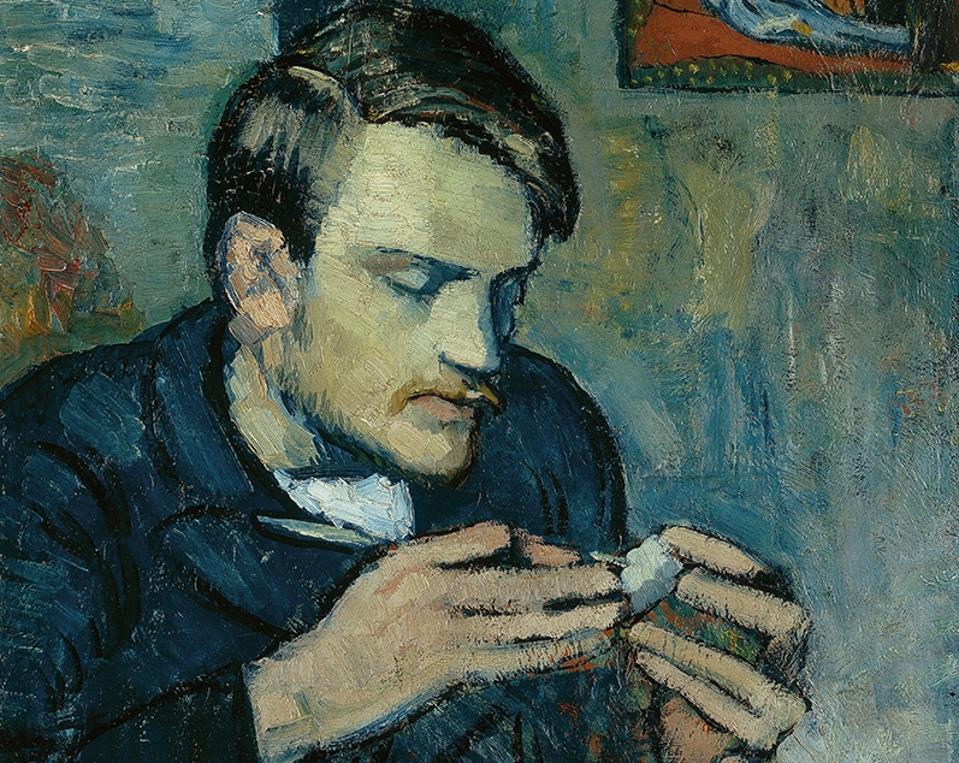


Nearly 125 years after Pablo Picasso painted a portrait of a sculptor friend, high-tech imaging tools have revealed another portrait hidden beneath it. The concealed image reveals a woman, the contours of her head and body clearly visible.
The Pablo Picasso painting “Portrait of Mateu Fernández de Soto” has revealed a hidden secret.
The painting, titled “Portrait of Mateu Fernández de Soto” after its subject, dates back to the beginning of Picasso’s Blue Period. During that time, the artist adopted a more melancholy, monochromatic style characterized by shades of blue and blue-green. Picasso said the suicide of a friend, Carles Casagemas, prompted the shift to a more somber palette.
Further analysis of the painting could reveal more about the woman in the hidden portrait, but we may never know who she was, says The Courtauld Institute of Art, which announced the discovery.
Like many artists of the day, Picasso often reused canvases due to financial constraints.
The hidden Picasso portrait is yet other example of science and technology tools shedding light on old art mysteries. X-rays, infrared reflectography and infrared spectroscopy make it possible to peer deep into a painting’s layers.
An infrared image of “Portrait of Mateu Fernández de Soto” shows the hidden woman on he right.
In the latest example of science and technology unraveling old art mysteries, art conservators have discovered a concealed portrait of a woman beneath a Pablo Picasso painting from 1901, the start of his famous Blue Period.
The researchers spotted the woman using advanced infrared and X-ray imaging technologies, which made clearly visible her fingers and curved shoulders and her hair tied back in a chignon, a fashionable style in Paris in the early 20th-century. The woman’s identity, for now at least, remains unknown, though she resembles women Picasso painted around the same time.
“She may have been a model, a friend or even a lover posing for one of Picasso’s colorful Impressionistic images of Parisian nightlife, or a melancholic woman seated in a bar,” The Courtauld Institute of Art, a University of London college that specializes in art history and conservation, said in a statement on Monday.
The institute analyzed the painting, titled “Portrait of Mateu Fernández de Soto,” in advance of its inclusion in the upcoming exhibit titled Goya to Impressionism. Masterpieces from the Oskar Reinhart Collection, opening Feb. 14 at the Courtauld Gallery. The painting atop the portrait depicts Picasso’s friend Mateu Fernández de Soto, a sculptor, working with his hands.
Like many artists of his and prior eras, Picasso commonly reused canvases as a cost-saving measure. However, he typically Picasso avoided completely whitewashing previous images when painting over them, instead embracing the embraced the experience of painting layer by layer.
“Picasso’s way of working to transform one image into another and to be a stylistic shapeshifter would become a defining feature of his art, which helped to make him one of the giant figures of art history,” said Barnaby Wright, deputy Head of The Courtauld Gallery.
Last week brought news of another hidden portrait by a famous artist coming to light through imaging tools. In that case, researchers discovered a portrait of a man hidden beneath a 16th century painting of Jesus by Renaissance master Tiziano Vecellio, known in English as Titian.
In 2023, technology helped reveal how Leonardo daVinci painted “Mona Lisa.” The same year, tech helped undress a female nude that had been painted over for centuries.


